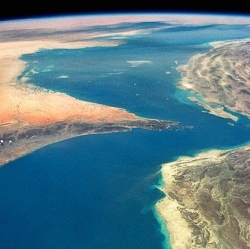
Five weeks from now, a Falcon 9 rocket is scheduled to blast off to the international space station carrying a DNA sequencer into space for the first time. While this isn’t big-deal science, no one has ever tried to decode DNA in space before. Being able to might come in handy on a Mars mission if a crewmember gets sick or a mold appears in a spaceship.
“Right now we culture stuff and return it to Earth, but if you send people to Mars you aren’t going to send samples back,” says Aaron Burton, a NASA chemist in charge of the experiment. He said NASA is also interested in determining if the microbes in people’s guts change while they’re in space.
Also notable is that the instrument to be shot into space, called the MinION, is small enough to fit in a coat pocket and works by reading DNA as it’s sucked through a teensy nanopore.
The sequencer is made by the British company Oxford Nanopore, which claims that the device will lead to an era of ubiquitous sequencing, scanning for germs in every sewer, subway station, or jungle outpost.
It’s obviously a public relations coup to be the first sequencer in space. You even get a nifty patch for your jumpsuit. But scientists say they didn’t have much choice, since every pound flown to the ISS incurs a payload charge of about $10,000.
Christopher Mason, a biophysicist at Weill Cornell Medical College in New York who is participating in the effort, says the 100-gram device is going to cost about $2,000 to fly. Most sequencing machines are the size of a mini-fridge and weigh 60 to 120 pounds. That would cost $1.2 million.
Mason previously sent the MinION for a ride on the “vomit comet,” a NASA airplane that mimics zero gravity by going into a nosedive. “It’s a technical demonstration to make sure it does work, which means when something is weirdly growing on the space station or on someone in the space station you could characterize it,” says Mason.
The space experiments are slated to be run by astronaut and virologist Kate Rubins, who will arrive on the ISS earlier in July, on her first trip off the planet. She’ll be sequencing the DNA of a virus, the bacterium E. coli, and of a mouse.
Although the MinION is tiny, it still requires a computer and an Internet connection to function. Also, further supplies are needed to prepare DNA samples. To skip that step, NASA plans to ready the DNA samples on Earth and send them up frozen, in syringes. Mason says no human DNA will be studied because of privacy concerns.
Once upon an alien world, or just the moon, says NASA’s Burton, a sequencer like Oxford’s could eventually be used to test for signs of life, or the molecules needed for life.
